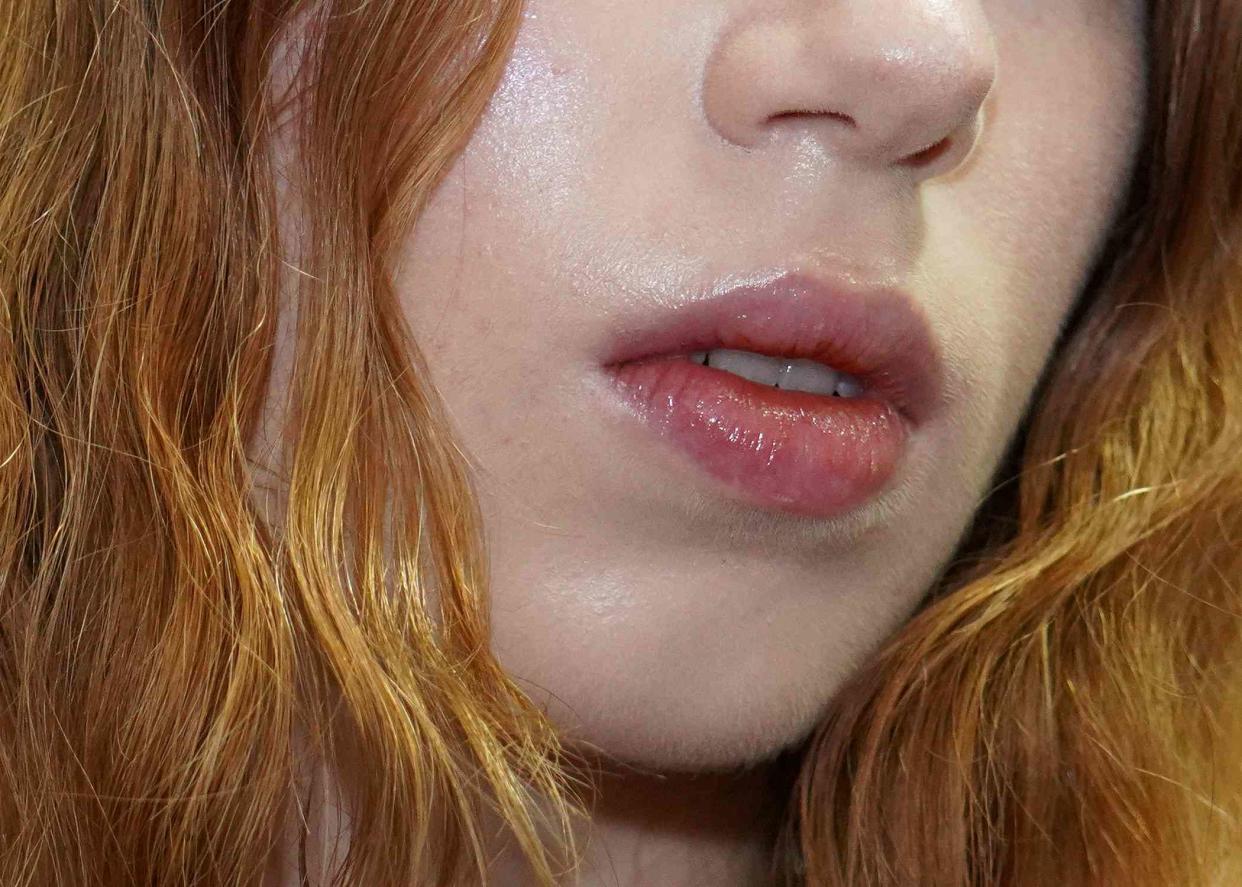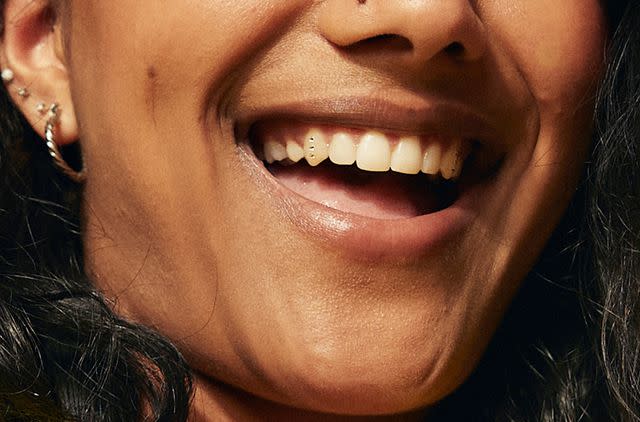Does Oil Pulling for Teeth Work? Experts Explain

Getty Images
I start each day by swishing coconut oil around my mouth for 10 to 20 minutes. No, it’s not for a love of the taste or texture-coconut oil is a magical beauty elixir, but I don’t crave spoonfuls of the stuff. I'm practicing oil pulling, an ancient technique thought to improve oral health. The simple act is said to come with myriad health and aesthetic benefits, and it’s a fairly meditative way to kick off your morning routine. Plus, it doubles as a welcome facial workout.
Sometimes referred to as oil swishing therapy, oil pulling is a DIY mouth rinse embraced by both ancient and contemporary times. “Oil pulling is an oral hygiene treatment dating back over 5,000 years, with its original roots in Ayurveda,” says Juhi Singh of The Juhi Ash Center. "It’s typically done after you wake up using coconut, sesame, or sunflower oil," says dentist Jon Marashi. The oil is "pulled" throughout the teeth and mouth, gradually thinning with each swish.
Meet Our Expert
Jon Marashi, DDS, a Los Angeles-based dentist and clinical program director at the California Center for Advanced Dental Studies.
Inna Chern, DDS, a dentist at New York General Dentistry.
Juhi Singh, CEO and founder of The Juhi Ash Center
The purported benefits of the affordable, ancient regimen include improved health, teeth whitening, and a more defined jawline. We tapped experts to find out which are evidence based. Here's what they had to say.
The Benefits of Oil Pulling

Getty Images
The American Dental Association says there is insufficient research to support the practice and any benefits. Dr. Marashi goes as far to say he doesn't recommend the practice, though he notes it isn't harmful. And while it’s definitely no substitute for twice-daily brushing and flossing, it has a long history of use in Ayurveda, and some research suggests it has antibacterial benefits and can help with bad breath.
“Oil pulling reduces inflammation and biofilm accumulation [a.k.a. plaque], which is important as harmful bacteria live in the biofilm and can cause periodontal disease and cavities,” says Dr. Inna Chern, a New York-based dentist. “Teeth also appear whiter because stains from food and drink don’t adhere as easily.” Studies have shown that consistent oil pulling can improve bad breath and reduce plaque.
"Oil pulling helps kill Candida, improves digestion, and cleanses the mouth in order to break down food," adds Singh.
Though there is no definitive mechanism behind oil pulling, researchers suggest three theories. The first is that once swished through the mouth, oil combines with saliva to create a soap-like substance that cleanses the teeth and gums. Others cite antioxidants, while a third camp suggests the consistency of the oil may prohibit plaque and bacteria from sticking to teeth.
How to Oil Pull
The method is generally very simple. “It is recommended that adults use one tablespoon of either sesame, coconut, or sunflower oil,” says Singh, who prefers coconut for its anti-microbial and anti-fungal properties. Next, swish for five to 20 minutes before spitting the oil out. “I find pairing an activity while swishing helps pass the time quickly,” says Singh. She’s right: I usually oil pull while making coffee and applying a morning eye mask.
“My advice is to start slow,” says Singh. “Start with 3 minutes and work your way up to 20.” Oil pulling is best done on an empty stomach and should never be swallowed, as the point is to expel toxins and bacteria. Be sure to spit into the trash rather than the sink to preserve the integrity of your pipes!
Ultimately, oil pulling is a time-honored tradition that has the potential to improve oral health and perhaps overall health, as well. The practice is best incorporated into an existing dental care routine that also includes brushing, flossing, and regular check-ups and cleanings.
For more InStyle news, make sure to sign up for our newsletter!
Read the original article on InStyle.

 Yahoo Lifestyle
Yahoo Lifestyle 
